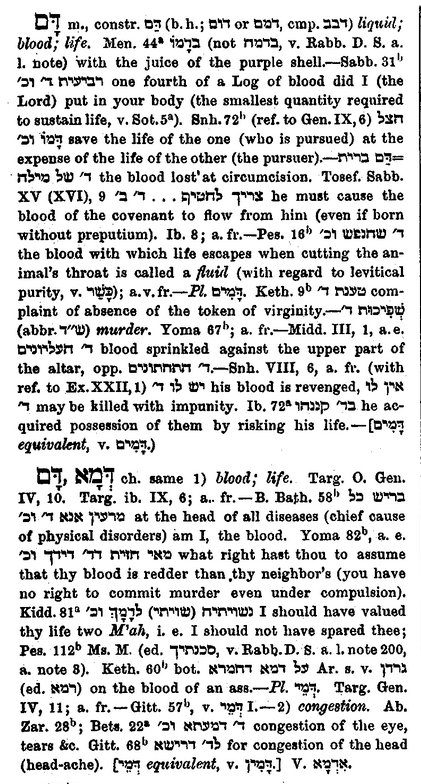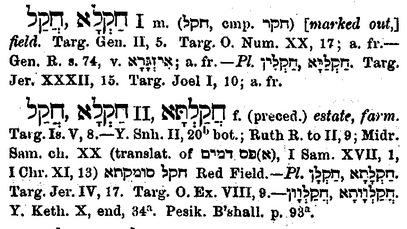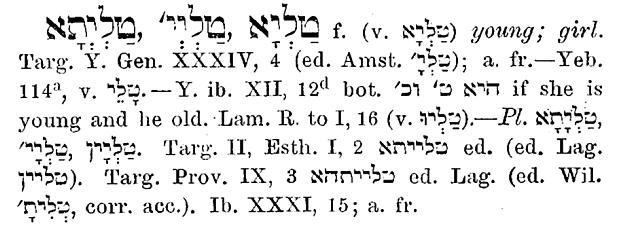Over time, I’ve been doing a little series of posts on Aramaic in the New Testament. This is the sixth post.
This week, I came across an Aramaic term that I just couldn’t pass up. In Acts 1, we get a rather gruesome description of Judas’ suicide after his betrayal of Jesus. We’re told that the horrific hanging happened in a particular places called “Akeldama.” Here’s the passage:
18 (Now this man bought a field with the reward of his wickedness; and falling headlong he burst open in the middle and all his bowels gushed out.
19 And it became known to all the inhabitants of Jerusalem, so that the field was called in their language Akeldama, that is, Field of Blood.) (Act 1:18-19 RSV)
Note on the Location
You can go look up the location, but basically it was and is a field of red clay dirt that was used by artisans in antiquity as a natural resource for making clay pots. In Matthew 27, 7, 10, the place is referred to as the “Potter’s Field” (Greek: τὸν ἀγρὸν τοῦ κεραμέως), hence the notion that the clay dirt was used for making clay pots. When it is called “field of blood” in Acts 1, the origin of the term might not be Judas’ suicide, but rather the red color of the dirt. The other thing to say is that Matthew and Acts differ on who purchased the field. In Acts, Judas bought the field, but in Matthew 27:7, the priests who paid Judas to betray Jesus bought the field to bury him. Either way, the location is still around and orthodox Christians have built a monastery on the place creatively nicknamed “Aceldama Monastery.” The field has also been used as a burial place.
Note on the Aramaic Word “Akeldama”
Simply, the word Akeldama transliterates the Greek “Ἁκελδαμάχ” (transliterated more precisely, Hakeldamach, note the appropriate rough breathing) which transliterates a combination of two Aramaic words: חֲקָל דְּמָא (chaqal dema). Some Greek manuscripts have a better spelling: Ἁκελδαμά (Act 1:19). Oddly, the English eliminates the Greek rough breathing which aims to transliterate the consonant chet. The word, dema or dma, means “blood” and appears many times in various combinations in Aramaic texts, as listed in the online Comprehensive Aramaic Lexicon. Here is the entry from Jastrow’s dictionary:
So the word, dam or dema, normally means blood, but can also refer to other fluids. The other word is chaqal, which means field. Again, CAL has a great listing and here’s Jastrow:
The word “Akeldama” represents then, the construct chain חֲקָל דְּמָא (chaqal dema). In which the first word, chaqal is masculine singular construct and dema is masculine singular emphatic. The construct chain is definite since it is a proper noun–like “the king of Persia” in Ezra 4:24–hence “the Field of (the) Blood” is the best translation. Note that Luke refers to “their own dialect” (ta idia dialekto auton), which indicates both he and his intended reader, Theophilus, are not part of the group of native Aramaic speakers, but native Greek speakers.
Conclusion
I suppose there’s no rocket science involved in explaining Akeldama. I think the only thing to say is that the English could do a better job transliterating it – perhaps as Halkeldema. The word simply means what Luke says it means “field of blood.”




